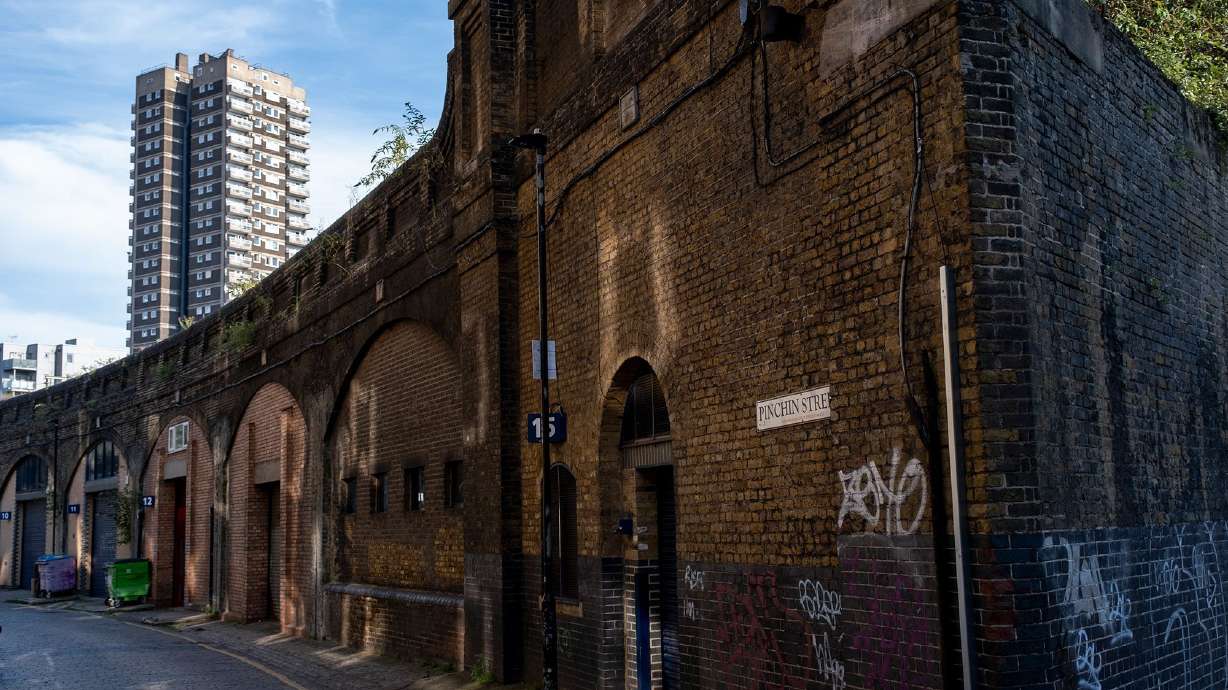LONDON — By 8 p.m., three London tour groups are jostling for room in Mitre Square, where murder victim Catherine Eddowes was found with her face mutilated and kidney removed. “I once saw two guides get into a fistfight over space here,” claims Charlotte Everitt, a guide with London-based Rebel Tours.
Tourists often arrive in London with a checklist: Buckingham Palace, Tower Bridge, afternoon tea — and a Jack the Ripper tour. Every night, hundreds of tourists retrace the supposed steps of Jack the Ripper — an unidentified serial killer who brutally murdered at least five women in 1888 yet went on to become one of Britain’s most lucrative cultural exports.
But for some locals, the industry has gone too far. The opening of the Jack the Ripper Museum in 2015 prompted protests. In 2020, Britain’s official mapping body, the Ordnance Survey, axed its tour of London entitled “Guts and Garters in the Ripper’s East End” following a client request citing “editorial standards.” A mural of the serial killer was painted over with the name Catherine Eddowes — one of his victims — in the same year.
Tourism centered around murder isn’t unique to this corner of London. A recent Netflix show about the Menendez brothers — who were convicted of their parents’ 1989 murders — brought crowds to the family’s Beverly Hills mansion. The site of the Jonestown massacre in Guyana has recently opened to tour groups. In Milwaukee, a “Cream City Cannibal Tour” takes visitors to sites associated with serial killer — and fellow Netflix documentary subject — Jeffrey Dahmer.
“Our dead can give us warnings from history, as it were, but it’s how we remember them, and that’s where the difficulty lies — it’s quite often a politics of remembrance of who we remember and why,” Philip Stone, from the Dark Tourism Institute at the UK’s University of Central Lancashire, told CNN. “And quite clearly, Jack the Ripper has been remembered because of his atrocities and his infamy, but he’s also been very much romanticized.”
Blurring the boundaries
According to Stone, there’s a “push and pull factor” when it comes to the popularity of Jack the Ripper. “The modern Ripper industry certainly markets itself really, really well. But I think there’s an inherent fascination with the story.”
“Time is the greatest healer. But it’s also time that can reinvent the story. There’s a theory of ‘chronological distance,’ the idea of chronologically becoming more and more distant, and being kind of subsumed into popular culture,” he said.
“Jack the Ripper has kind of morphed into this fictional character. He’s been romanticized, it’s been morphed into public culture, and that kind of extends the boundaries or blurs the boundaries between what’s real and what’s not real,” Stone added.
The tours are undoubtedly popular, and references to the infamous killings around London’s Whitechapel district have become fixtures of the local landscape. A barbershop trades under the name Jack the Clipper. A nearby takeaway shop is called Jack the Chipper. Designer fashion retailer AllSaints has named its flagship store in the area Jack’s Place. Until recently, there was a baked potato vendor called Jacket the Ripper.
“The issue isn’t discussing the Whitechapel murders,” Everitt said. “The issue is how they’re discussed.” Rebel Tours launched an alternative walking tour in 2022 — “Jack the Ripper: What About the Women?” Initially, the team considered leaving the murderer’s name out of the title entirely but found that doing so made it significantly harder to attract interest.
“People hear about what we’re doing and say, ‘Oh, that’s amazing,'” Everitt said. “But we’re not seeing the numbers. And I’m not saying we want those numbers — we’re a small-group company, and we like that. But it’s telling how many people still choose the other kind of guide.”
For her, the use of graphic imagery, as well as the insistence that all victims were sex workers despite concrete evidence to the contrary, are among the most troubling aspects.
“Some guides show photos of Mary Jane Kelly’s body,” she said. “If you wouldn’t show the body of a modern-day victim, why is it OK to show hers? She was just as real.”
‘Historical context’
In 2015, the Jack the Ripper Museum opened, adding to the area’s commercial references to the case — and igniting controversy. The museum had been granted planning permission on the basis that it would showcase the history of women in the East End, with the application describing a space that would honor “the historic, current and future contribution of the women of the East End.”
“Everyone was quite excited that a museum telling the history of the women of London’s East End would be opened. And then we discovered it would actually be a Jack the Ripper museum with some thinly veiled attempts at telling the story of the East End. That’s when there was a backlash,” Catherine Owen, chairwoman of the East End Women’s Museum — which was founded to counter the Jack the Ripper Museum — told CNN.
The museum’s founder, Mark Palmer-Edgecumbe, told local media in 2015 that the museum’s full title is Jack the Ripper and the History of Women in East London, that the sign was incomplete, and that: “We are not glorifying the murders or celebrating the murders; we are doing a forensic examination of the murders and setting that in the historical context of the period.”
A decade later, the museum continues to operate under the name Jack the Ripper Museum; the gift shop’s merchandise includes teddy bears dressed as the Ripper and T-shirts with the killer’s silhouette. The Jack the Ripper Museum did not respond to CNN’s request for an interview but highlighted its positive reviews on TripAdvisor.
The Key Takeaways for this article were generated with the assistance of large language models and reviewed by our editorial team. The article, itself, is solely human-written.
